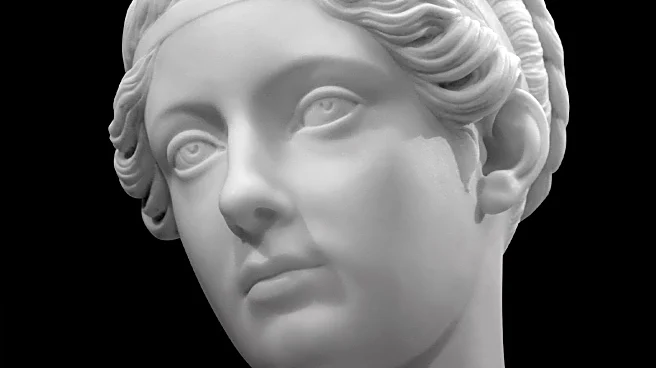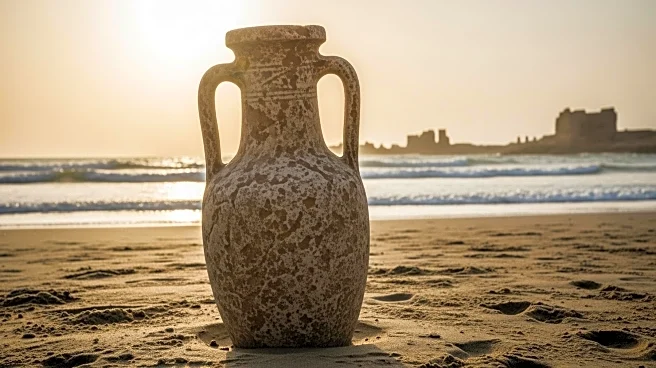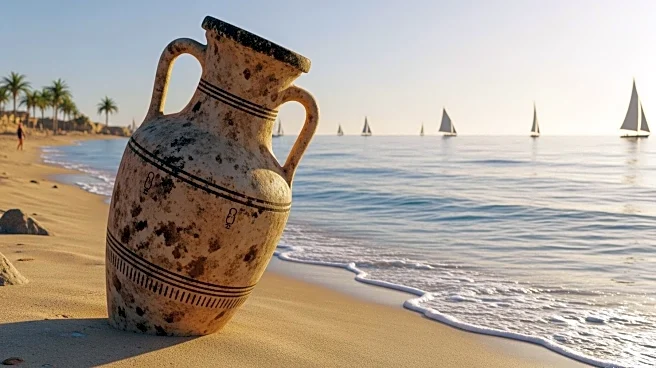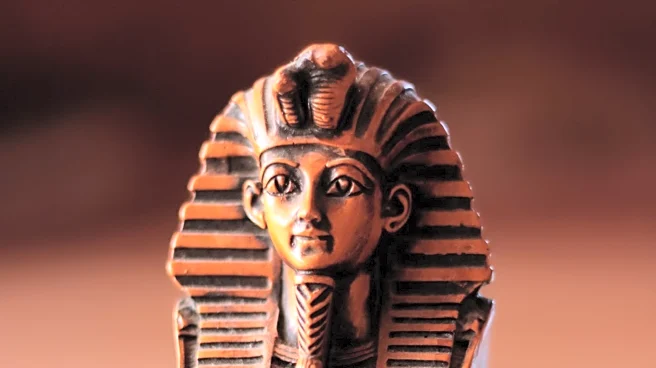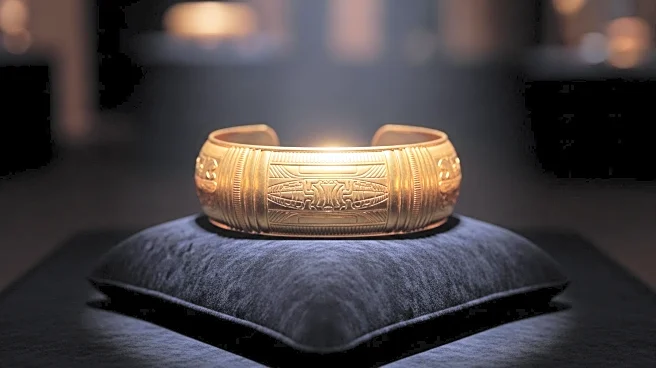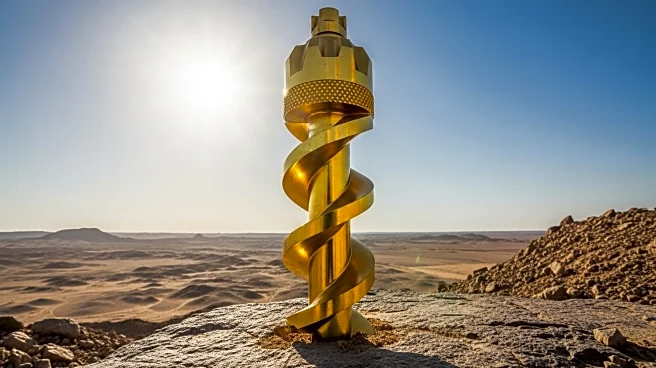What's Happening?
Archaeologist Kathleen Martínez is investigating a sunken port off the coast of Borg El Arab, Egypt, in search of Queen Cleopatra's tomb. The site, Taposiris Magna, is believed to be a religious center and maritime hub during Cleopatra's reign. Martínez's research, supported by sonar mapping and underwater exploration, has revealed large constructions and artifacts dating back to Cleopatra's time. The discovery challenges traditional beliefs about Cleopatra's burial location, suggesting Taposiris Magna as a potential site.
Why It's Important?
The search for Cleopatra's tomb is a significant archaeological endeavor that could reshape historical understanding of the ancient world. Discovering the tomb would provide insights into Cleopatra's life and the Ptolemaic dynasty. The findings at Taposiris Magna highlight the importance of interdisciplinary collaboration in archaeology, combining historical research with modern technology. This exploration also underscores the cultural and historical significance of preserving ancient sites.
What's Next?
Further underwater excavations are planned to explore the submerged areas around Taposiris Magna. Martínez and her team aim to identify potential burial sites and uncover more artifacts. The ongoing research may attract international attention and funding, potentially leading to new discoveries and collaborations in the field of archaeology.

